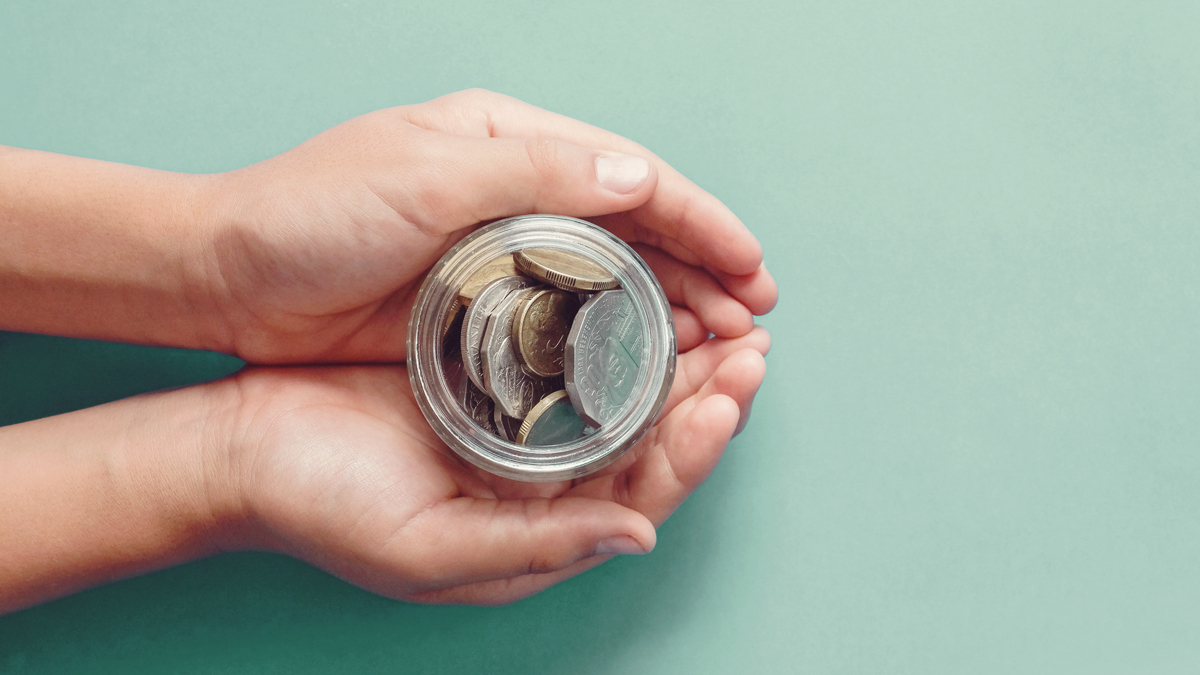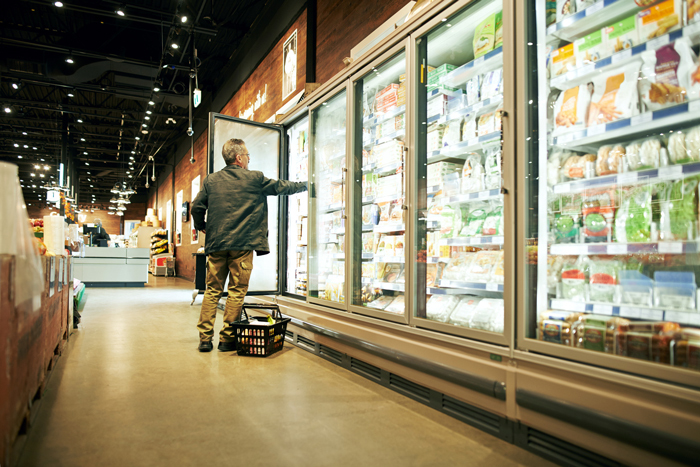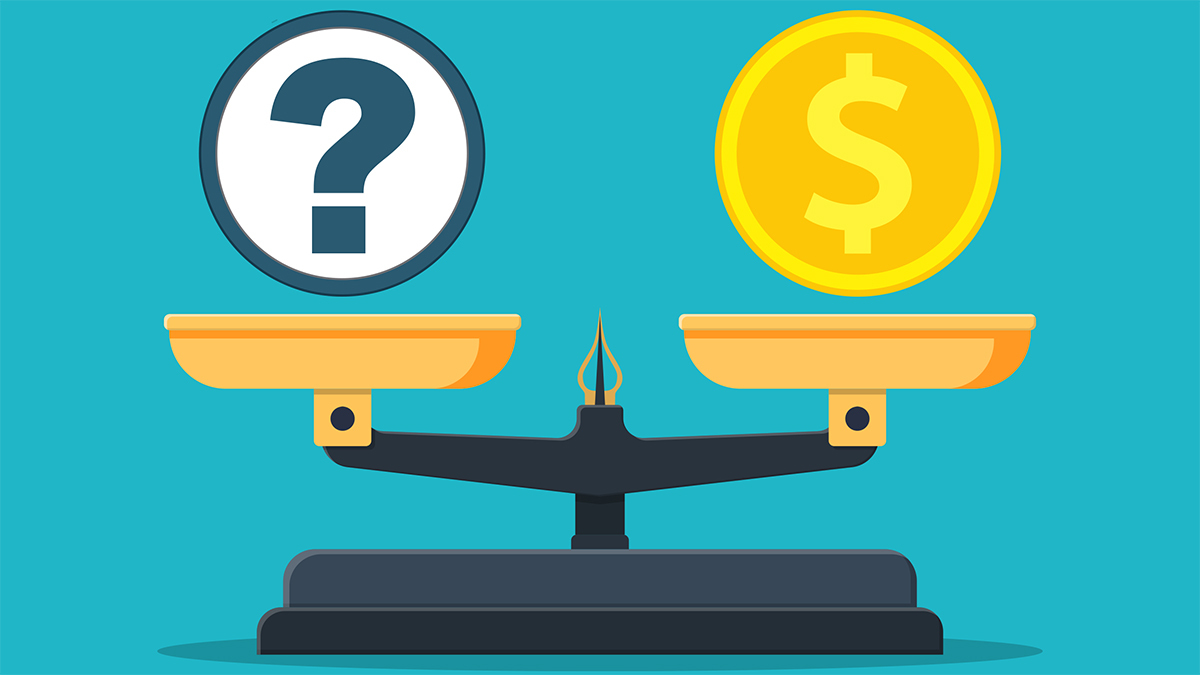Get our independent lab tests, expert reviews and honest advice.
Top ways to save money you never thought of

We’ve been tracking household sentiment on the cost of living for the last nine years and it’s probably no surprise that concern around expenses is at its highest level since we began conducting our quarterly Consumer Pulse survey.
In our September 2023 survey, a record 96% of households told us they’d seen their household bills and expenses increase over the past 12 months. Australians told us that the cost of food, fuel and electricity are the key pressures affecting them.
Housing costs are also a pressure point. In January 2021, just under half of the mortgage holders we surveyed (46%) and slightly more than half of renters (51%) told us the cost of housing was a concern. Now, 84% of those with mortgages say they’re concerned about the expense and almost three out of four (73%) renters are feeling worried about how much they’re paying.
To help you hold on to more of your precious spending money, we’ve drawn on the breadth of our expertise to bring you our top tips on how to keep a lid on your cost of living.
How to save at the supermarket
Food and grocery prices were the biggest cost pressure for consumers in our latest survey, with 88% of households concerned about how much they were paying at the checkout. All the more reason to start making savings with these tips:
1. Get better value by comparing unit prices
Unit prices break down the cost of a product into standard units of measurement, such as per 100 grams, and let you compare different products more easily.
And it really works. Our research shows that shoppers find it much easier to identify the best value product when they have unit pricing to help them compare.
So look beyond the headline price of an item and see where you could be getting better value by comparing unit prices between different brands or different packet sizes.
2. Switch to supermarket-brand products
Our tests have found that supermarket home-brand products have improved in quality in recent years, occasionally even outdoing national brands in taste tests.
The even better news is that our latest basket survey found possible savings of up to 40% when shoppers switched to these products.
3. Grab specials as they come up
Our supermarket surveys found very little price difference between the big retailers, meaning switching between them when each offers specials could go a long way in helping you save.
Shoppers find it much easier to identify the best value product when they have unit pricing to help them compare
CHOICE Community members who practise multi-store shopping have told us they’ve been able to save 20% to 40% off their weekly groceries by doing this.
Keep track of discounts by downloading the supermarket shopping apps on your phone. You can also browse catalogues to see if what you’re after is on special at a nearby outlet before deciding where to spend your money.
4. Look for product refills
More retailers are now selling products that can be refilled, which means you can save money and reduce the amount of environmental waste you produce.
Our research found that these products can deliver average savings of 32% compared with just buying another pre-filled dispenser.
5. Avoid pre-cut food items
We’ve found that some pre-cut fruit and vegetables can cost up to five times as much per kilo as the unprocessed originals, not to mention leaving you with more plastic to get rid of.
So save by buying whole items, sharpen up your knife skills and learn easy ways to chop up your own vegetables at home with our guides to quick vegie prep.
6. Try different cuts of meat
Looking closely at price tags, you’ll see that some cuts of your favourite meats will be cheaper than others.
For instance, we’ve found that chicken drumsticks can be up to three times cheaper than breasts, and that osso bucco and beef chuck steak are good value options when slow cooked.
7. Buy frozen instead of out-of-season
If you’re planning on buying fruit or vegetables outside their usual growing seasons, it’s often cheaper to settle for the frozen options.
Although fresh produce can be good value when in season, at other times some items can get very expensive and buying them frozen will save you money.
8. Plan meals ahead, and shop smaller and more often
Take stock of what’s in your kitchen and plan a meal menu in advance to avoid buying (and then wasting) things you don’t need.
If you can, plan smaller, midweek supermarket shops for fresh produce, as buying these in bulk once a week can lead to more waste. Buying imperfect fresh produce can also be a good way to save money, but planning is again needed here, as these products often come in bulk.

How to save in the kitchen
Once you get home from the shops, there are even more ways to save around the kitchen by being mindful of food storage and making wise investments in cost-saving appliances.
9. Keep food in the right place
Get the most out of the food you’ve just spent money on by storing it the right way.
Tomatoes will stay flavourful for longer, and bread will go stale less quickly, if you keep them out of the fridge. On the flipside, keeping eggs in the fridge generally means they’ll keep better and last longer.
CHOICE tip: Get more handy tips on how to save in the kitchen with our guide to food storage mistakes.
10. Switch to reusable wraps or containers
If you’re someone who automatically reaches for cling wrap every time you need to put something in the fridge, consider reusable wrapping or plastic containers.
Using these instead of pulling out yet another sheet of disposable cling film will save your wallet and the planet.
11. Serve or preserve your leftovers
Make your leftovers tomorrow’s lunch or let your freezer do some saving for you by stacking it with portions of larger dishes.
Learn how food offcuts could be quickly turned around and transformed into kitchen staples like stock with our guide to transforming food waste.

12. Get money-saving gadgets
A food processor is one of the best kitchen tools for saving money. It will let you avoid those expensive pre-cut food items and extend the life of foods such as bread, which can be blitzed into breadcrumbs.
Similarly, our analysis has found that buying a coffee machine will save you money in the long run if you’re a café aficionado and a juicer will do the same for juice-bar regulars.
How to save on electricity and gas
Our latest data shows energy bills are a growing cause of headaches for households – 85% were concerned by electricity costs, up from 64% in January 2022. Among gas users, 71% were concerned about the cost, up from 51% two years ago.
Avoid ‘bill shock’ and prevent rising power prices hoovering up more of your household budget than they have to with our tips and tricks:
13. Get more out of your everyday appliances
There are lots of ways you can save while using household essentials such as washing machines and air conditioners. These include washing only full loads of clothes, and keeping filters on driers and air conditioners clear of debris (which means they don’t have to work as hard).
Check out our guides for washing machines, dryers, heaters and air conditioners for further tips on how to get more out of your household appliances.
14. Turn off power-sucking devices
The cost of keeping devices on standby, such as routers, printers and microwaves, can chip away at your bank account, sometimes to the tune of hundreds of dollars a year.
Turn off devices completely by switching them off at the wall when you can, and pay attention to energy-efficiency labels to shave that bit extra off your power bill.
15. Renegotiate with your power provider – or find a new one
If you’ve already cut back on energy usage, but are still struggling to keep a lid on your power bills, consider renegotiating your plan with your provider – or finding a new one altogether.
Our guide to switching to a better energy provider explains how you can save by talking to your current retailer or, if that doesn’t work, moving to a new one. Do note, though, that a number of retailers are currently not taking on new customers due to the spike in energy prices.
16. Take advantage of solar and appliance rebates to upgrade your home
Solar arrays come with a significant upfront cost, but because of the rising cost of electricity, they’re now paying for themselves faster in most cases, meaning more savings sooner.
Factoring in the latest electricity price increases, a 6.6kW solar system will now take between three and six years to pay for itself, depending on where you live.
Also depending on your state or territory, you might also be able to take advantage of various rebates and discounts offered by governments to help you install solar and even upgrade your appliances to more efficient models.
Learn how long it could take for solar to pay for itself on your home with our Solar Estimator.
17. Time to turn off the gas?
Switching from gas cooking to electric is another option that carries an upfront cost but can deliver savings in the long term. The running costs for an induction cooktop are cheaper than gas, but factoring in purchase and installation costs means you won’t make savings immediately. However, according to the Climate Council, households can save between $500 and $1900 a year by switching from gas to electric.

How to save in the car
Fuel vied with electricity to remain a major pressure on household budgets in our latest Consumer Pulse survey, with 85% of those we surveyed expressing concern about what they’re paying at the bowser.
While most of us still rely on a vehicle to get from A to B, there are ways you can stay on the road for less.
18. Compare bowser prices on apps
Check our fuel apps review to see which ones are best at helping you save on petrol in your region.
Some state and territory governments, and a variety of third-party compilers offer this service, which can show the lowest prices at service stations near you.
19. Go electric
Moving from a petrol or diesel-powered vehicle to an electric vehicle has the potential to deliver drivers significant savings on their running costs. While there’s obviously an upfront cost, if you’re in the market for a new vehicle, an electric option could help you save.
According to Australia’s Electric Vehicle Council, the average Australian driver could save $1560 a year on fuel and $2400 a year on maintenance by switching to an electric vehicle.
See our latest electric vehicle reviews.
20. Plan your trips and don’t speed
As well as potentially saving your life, driving slower can also save you money. Fuel consumption goes up dramatically once you start going over 90km/h, meaning you might have to stop off to refill your tank sooner than expected.
You can also save on fuel by not using your car for short trips. Cars use up to 20% more fuel when the engine is cold, so once you’ve started, try to do all your errands in one go.
21. Balance air conditioning and open windows
Turning on the air conditioning in your car can increase fuel consumption by up to 10%, so opening your windows could save some fuel costs when driving around town.
But if you’re driving faster than 80km/h, an open window will cost you more due to aerodynamic drag, so air con might be better at higher speeds.
How to save on insurance
It’s a ‘grudge purchase’ for many of us, but home, car and health insurance can be vital when we need it.
That doesn’t mean it needs to be unbearably expensive and there are several ways you can get some peace of mind for less.
22. Find out if you actually need private health cover
Private health insurance is essential for some, but Australians have been giving it up in droves in recent years and we recommend only stumping up for health cover if you have to.
That said, taking out a policy can mean you won’t have to pay as much tax as before, but this depends on your income.
CHOICE tip: Take our Do I need health insurance? quiz before coughing up for a policy to see if it will actually benefit you financially.
23. Look for cheaper health cover
We’ve found that people with private health cover could save up to $935 a year on hospital cover by switching to a similar policy with a different insurer.
Sticking with the same insurer year after year can lead to you paying more in premiums
There are hundreds of dollars’ difference among providers, meaning you could make big savings if you shop around.
24. Get no-claim and restricted driver discounts on car insurance
Some insurers will discount your premiums if you agree to restrict the use of your car to nominated drivers or those over a certain age.
Most insurers also offer a no-claims discount or safe-driver bonus, which could save you up to 70% if you go for a certain period of time without making a claim.
Find out more in our guide to buying car insurance.
25. Get insurance to match the value of your car
If your car isn’t worth much, save money by getting it insured under a cheaper policy. In fact, it may be worth just getting cheaper third-party cover, which only covers you for damage you cause to other cars.
26. Compare your policy and avoid the ‘loyalty tax’
Sticking with the same insurer year after year can lead to you paying more in premiums. So don’t get stung for your loyalty and compare what you’re paying with online quotes for new customers before renewing your policy.

Things to avoid if you want to save
Sometimes it’s the things you don’t do that can save you the most.
27. Getting fooled by dodgy household goods
From fridges with poor temperature control to TVs with tinny sound, there are a raft of everyday household goods that aren’t worth their price tag.
Know which ones not to spend your hard-earned money on with our guides to the fridges, dishwashers, washing machines, TVs and stick vacuums that performed most poorly in our tests.
28. Taking out ‘junk’ basic health insurance policies
Taking out basic health cover just to reap potential tax benefits can seem tempting, but we’ve found these policies to be of poor value.
This is because they’ll only cover you for emergencies (where you’re likely to be taken to a public hospital anyway) and are only a few dollars cheaper than better-value policies.
29. Using wage advances and buy now, pay later (BNPL) schemes without secure finances
Services that let you get hold of part of your salary early are credit products, meaning you’ll pay back more than you originally borrowed.
Consumer advocates have told CHOICE they’re concerned that these products, along with BNPL services, can create potential debt traps for people who are already struggling financially.
Instead of using these products to pay for an essential service, consider applying for the No Interest Loan Scheme
Instead of using these products to pay for an essential service, you could consider applying for the No Interest Loan Scheme (NILS). In the words of the government’s Money Smart website, NILS gives people on low incomes “access to safe, fair and affordable credit. Loan amounts are up to $1500 for essential goods and services such as fridges, washing machines or car repairs”.
30. Being afraid to haggle
While there are certain purchases where haggling isn’t an option, on many larger transactions you will often find retailers have some discretion to reduce the price. When we were buying mattresses for a recent review, we negotiated a cheaper price in more than half of the purchases, in one case knocking off almost 50%.
Learn how to do the same with our guide to haggling.
31. Paying for services you don’t use
Signing up for a subscription to a streaming service is very easy, but if you’re not careful you can end up paying for access you don’t use. Do a review of those you’re currently paying for and consider cancelling or downgrading those you’re not getting value from.
Alternatively, you can be tactical with your viewing and only sign up to a service when it has something you want to watch and then cancel once you’re done – you can always rejoin later.
Safety nets to help
If you find yourself being overwhelmed by bills, you’re not alone. But there are free resources and services that may be able to help you.
32. Talk to your provider if you’re in trouble
If you’re struggling to keep up with utility bills or insurance premiums, a good first step is to talk to the company billing you.
Many of these companies will have hardship policies for people doing it tough. Explain your situation and see if they can help you by setting up a payment plan or giving you an extension to pay.
If you’re having trouble reaching an agreement with your retailer regarding energy or water bills, you can get support from your local ombudsman.
33. Speak to an independent financial counsellor for free
The National Debt Helpline offers free, confidential financial counselling to help people manage their debts and get their finances back under control. It’s a nonprofit community service that’s available to anyone in financial difficulty.
You can contact them via their website at ndh.org.au (where they also have resources for dealing with debts) or by calling 1800 007 007.
34. Explore your options for government assistance
State, territory and federal agencies offer various programs to help people on low or fixed incomes who are struggling to pay their bills.
Find your local authority and see if you’re eligible for payments on the federal government’s MoneySmart website.
About Consumer Pulse
*CHOICE Consumer Pulse September 2023 is based on a survey of 1035 Australian households. Quotas were applied for representations in each age group as well as genders and location to ensure coverage in each state and territory across metropolitan and regional areas. The data was weighted to ensure it is representative of the Australian population based on the 2021 ABS Census data. Fieldwork was conducted from 29 August to 18 September 2023.






